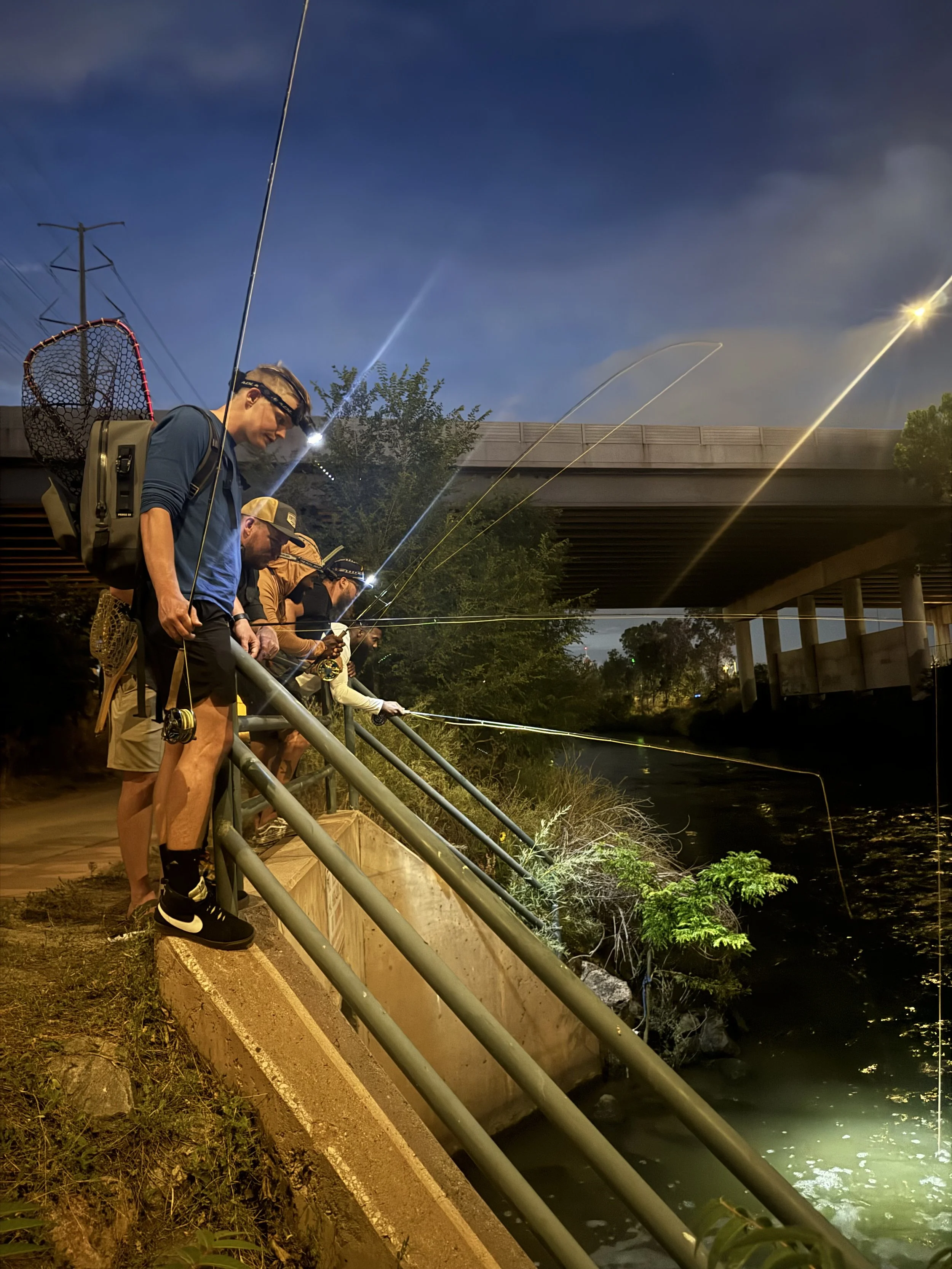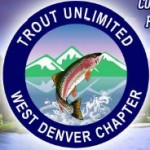"How much water does a river need to stay alive? At what point does the upper Colorado cease to be a functioning river? We may be dangerously close to finding out."
Sucked Dry: Will State Leaders Help Defend the Embattled Colorado River?
By Drew Peternell, Trout Unlimited
If you’ve driven down the hill on I-70 recently, perhaps after an escape to one of Colorado’s West Slope playgrounds, you might have seen a billboard near Golden that warns, “Don’t Suck the Upper Colorado River Dry.”
It’s a blunt wake-up call to state leaders, water utilities, Front Range residents, and all Coloradans who care about the future of our state’s namesake river.
The Colorado River, from its headwaters in Rocky Mountain National Park down through Granby, Kremmling, Glenwood Springs and beyond, has long been a favorite destination for Front Range residents. Generations of Coloradans have fished, hunted, hiked, camped and floated along the waters of the Colorado.
But most Front Range residents don't realize that much of the water they use at home comes directly from the streams and rivers of the upper Colorado River basin. A spider-web network of dams and pumps and pipelines delivers water from the Colorado and other West Slope rivers to showerheads and sprinklers in Denver and surrounding areas.
Already Front Range utilities take about 60 percent of the water that originates in the upper Colorado River basin, draining Grand County to the point that many of its once pristine streams now run dry.
The Fraser River, a Colorado tributary where President Eisenhower spent summers fishing, is among the hardest hit.
The low stream flows take a devastating toll on river health. Studies show dramatic declines in the size and health of trout, and entire classes of aquatic insects have disappeared from the river. Because of low stream flows and high water temperatures, the Colorado and several tributaries are choked with silt and algae.
More Proposed Diversions
And now, Front Range water providers are planning to drain the Colorado and Fraser rivers some more.
Two proposed water-diversion projects -- Denver Water's Moffat Collection System Project and the Northern Colorado Water Conservancy District's Windy Gap Firming Project -- threaten to push the Colorado and Fraser rivers and their tributaries past the tipping point. Combined, the projects could leave as little as 25 percent of native upper Colorado River water on the West Slope.
A river with one quarter of its natural flow. If present trends continue, the mighty Colorado River could someday be called Colorado Creek -- or the Colorado Trickle.
How much water does a river need to stay alive? At what point does the upper Colorado cease to be a functioning river? We may be dangerously close to finding out.
The CPW Study
A 2011 report by the Colorado Division of Parks and Wildlife (CPW) underscores the poor ecological health of the upper Colorado River. Led by respected veteran CPW biologist Barry Nehring, the study documents a river in sharp decline, suffering from multiple maladies caused largely by water diversions to the Front Range (see sidebar).
The CPW study acknowledges that these problems are likely to worsen with additional water withdrawals. It outlines several measures needed to maintain the health of the Colorado River under the lower flow conditions that would result from the projects Denver Water and the Northern Water District are proposing.
The three key measures are: (1) preservation of higher spring flushing flows to help remove sediment that smothers fish and insect habitat; (2) stream reconfiguration to narrow the channel, so that the remaining water flows are deeper, cooler, and faster; and (3) construction of a bypass around Windy Gap Reservoir -- a source of silt, algae, thermal pollution, and the lethal rainbow trout whirling disease.
Current project plans do not include the protections the CPW report identified as necessary to maintain the health of the upper Colorado River under the increased diversions.
Insufficient Protections for the River
In a formal letter issued in February, the EPA listed a host of concerns about the river impacts of the Moffat and Windy Gap project proposals. Citing the CPW study at length, the EPA called for stronger protections than in the fish and wildlife mitigation plans the Colorado Wildlife Commission approved for the projects last summer.
But Governor Hickenlooper and other state officials responsible for protecting Colorado’s natural resources recently have distanced themselves from the CPW report, asserting that the present mitigation packages are sufficient to preserve the river -- notwithstanding the conclusions of state wildlife biologists and the EPA to the contrary.
There is no doubt that the Colorado Wildlife Commission and its staff reviewed the fish and wildlife mitigation plans carefully and secured as much protection for the Colorado and Fraser Rivers they thought they could. But state law -- as interpreted by the Colorado Attorney General’s Office -- limited the Wildlife Commission’s authority to demand broader protections. During the hearings, several wildlife commissioners publicly lamented that they could not do more.
Time for a Way Forward
Hickenlooper is rightfully proud of the so-called “Cooperative Agreement” he helped broker last year between Denver Water and a number of West Slope stakeholders. The agreement places some restrictions on future Denver Water projects that impact the Colorado River, and it requires Denver to increase its conservation efforts.
But let there be no confusion. The agreement does not address the Moffat and Windy Gap project proposals, and it does not fully resolve the problems facing the Colorado River.
Governor Hickenlooper has a golden opportunity to follow-up on his good work on the cooperative agreement. He should bring interested parties to the table to craft a final mitigation plan that fully addresses the impacts of the current water withdrawal proposals.
If state officials are unwilling or unable to join the effort to protect these important resources, they need to step aside and let the federal agencies do their job as they review the projects.
Much to Lose
No one would claim that finding a solution will be easy -- these are tough, complex challenges. But, with cooperation and leadership from the state, the project proponents and other interested parties, it should be possible to craft a way forward that supplies additional water to the Front Range while keeping the Colorado River healthy.
The West Slope rivers that we tap to deliver water to the Front Range are priceless. They are vital to the health of mountain communities, Colorado's $10 billion-a-year outdoor recreation economy, and the high quality of life Coloradans enjoy.
Given all we stand to lose, now is the time to find a solution that preserves the Colorado River as the state treasure that it is.
For more information and to add your voice to those calling for protection of the Colorado River, go to www.defendthecolorado.org.
A River on the Brink
A 2011 study by the Colorado Division of Parks and Wildlife found that water diversions to the Front Range have caused severe ecological damage to the upper Colorado River. The impacts to the river below Windy Gap Reservoir include:
- A 38 percent decline in aquatic insect life;
- A complete elimination of native sculpin fish -- a key indicator of stream health;
- An almost total loss of the population of giant stoneflies -- once the dominant aquatic food source on the river;
- An “armoring” of the river bottom from sediment and silt, destroying spawning habitat for trout and smothering aquatic insect populations.
The study concludes that additional water withdrawals from the proposed Moffat Collection System and Windy Gap Firming projects will make these problems worse.
Drew Peternell is director of the Colorado Water Project for Trout Unlimited, whose mission is to conserve, protect and restore North America’s coldwater fisheries and their watersheds.
Read this opinion piece by Drew Peternell, director of TU's Colorado Water Project at DenverPost.com.
And go to www.defendthecolorado.org to learn more and join the effort.
 Read: Judge's ruling means second look for Roan drilling plan from the Grand Junction Sentinel.
Read: Judge's ruling means second look for Roan drilling plan from the Grand Junction Sentinel.












